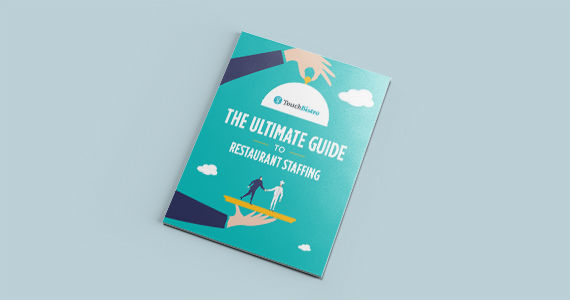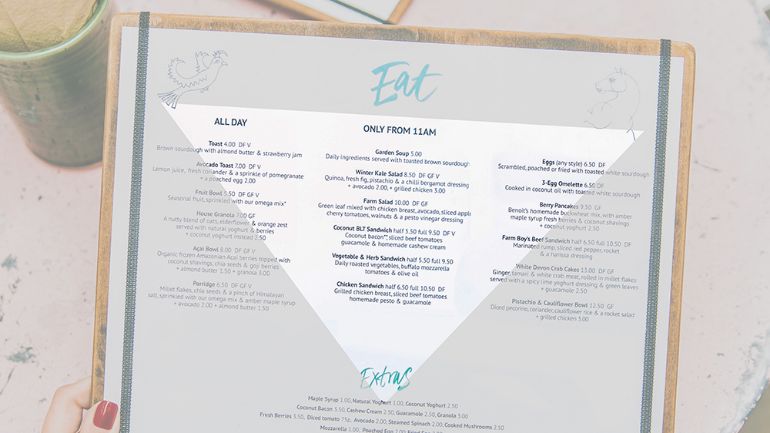With 21 states set to increase wages in 2025, this is forcing restaurant operators to think about how they will adjust their businesses to accommodate for a higher restaurant minimum wage in the year ahead.
The good news is that several states in the U.S. (and provinces in Canada) have already increased their minimum wage, tipped minimum wage, and tip credit in the past few years. Following their lead and employing these payroll strategies can help to combat the rise of the minimum wage, without reducing staff or compromising customer service.
In this article, we’ll tell you everything you need to know about restaurant minimum wage increases and dealing with increased labor costs, including:
- Which states, provinces, and cities are currently seeing minimum wage increases
- How restaurant minimum wage increases will affect your business payroll
- Six ways you can deal with a minimum wage increase

Learn how to hire, train, schedule, and retain restaurant staff.
The Cost of a Restaurant Minimum Wage Increase
In the U.S., what is the minimum wage for restaurant workers? The current U.S. federal minimum hourly wage is $7.25/hour, and has remained unchanged since 2009.
Keep in mind that the minimum wage for untipped employees is different from the minimum wage for tipped employees. Most servers are paid a tipped minimum wage that is lower than the standard minimum wage.
Tipped or untipped the hourly wages in cities and states continue to rise, and when your business is located in an affected region, the federal minimum wage takes a back seat to the state or city rate.
United States Minimum Wage Rates for 2025 by State
Here are the current U.S. state restaurant minimum wage rates for 2025 and the planned increases:
Alabama: $7.25/hour (no state minimum wage law).
Alaska: $11.91/hour.
Arizona: $14.70/hour.
Arkansas: $11.00/hour for businesses with 4 or more employees.
California: $16.50/hour for all employees ($17.27/hour in Los Angeles and $18.67/hour in San Francisco) until June 30, 2025.
Colorado: $14.81/hour ($18.81/hour in Denver).
Connecticut: $16.35/hour.
Delaware: $15/hour.
Washington D.C.: $17.50/hour as of July 2024.
Florida: $13/hour as of September 30, 2024. Planned increases of $1 per hour each year until it reaches $15/hour on September 30, 2026.
Georgia: $7.25/hour ($5.15/hour for employees not covered under FLSA). Clayton County, near Atlanta, will have a $23.46/hour minimum wage as of January 1, 2025.
Hawaii: $14.00/hour.
Idaho: $7.25/hour.
Illinois: $15/hour. The rate is different in Chicago, where the minimum wage for non-tipped employees is $16.20/hour for large businesses that employ 4 or more workers.
Indiana: $7.25/hour (for employers of 2 or more workers).
Iowa: $7.25/hour.
Kansas: $7.25/hour.
Kentucky: $7.25/hour.
Louisiana: $7.25/hour (no state minimum wage law).
Maine: $14.65/hour.
Maryland: $15.00/hour regardless of business size. Montgomery Co. has its own minimum wage laws.
Massachusetts: $15.00/hour and the tipped minimum wage (for workers who provide services to customers and make over $20.00 a month in tips) is $6.75/hour.
Michigan: $10.56/hour until February 21, 2025, when Michigan’s minimum wage will increase to $12.48/hour.
Minnesota: $11.13/hour for all employees, except those 20 years of age or younger who qualify for a $9.08/hour 90-day training wage.
Mississippi: $7.25/hour (no state minimum wage law).
Missouri: $13.75/hour.
Montana: $10.55/hour.
Nebraska: $13.50/hour.
Nevada: $12/hour.
New Hampshire: $7.25/hour.
New Jersey: $15.49/hour (6 or more employees) and $14.53 (fewer than 6 and seasonal employees).
New Mexico: $12.00/hour.
New York: $16.50/hour (New York City, Long Island, and Westchester County) and $15.50/hour for the rest of the state.
North Carolina: $7.25/hour.
North Dakota: $7.25/hour.
Ohio: $10.70/hour for employers with annual gross receipts of more than $394,000 per year.
Oklahoma: $7.25/hour ($2.00/hour if a company has >10 staff or grosses >$100,000 in sales).
Oregon: $14.20/hour is the standard rate, $15.45/hour in the Portland metro area, and $13.20/hour in non-urban counties.
Pennsylvania: $7.25/hour is the minimum wage for untipped employees and $2.83/hour is the minimum wage for tipped employees.
Rhode Island: $15./hour.
South Carolina: $7.25/hour (no state minimum wage law).
South Dakota: $11.50/hour.
Tennessee: $7.25/hour (no state minimum wage law).
Texas: $7.25/hour.
Utah: $7.25/hour.
Vermont: $14.01/hour.
Virginia: $12.41/hour.
Washington: $16.66/hour ($20.76/hour in Seattle).
West Virginia: $8.75/hour (applicable to employers of 6 or more staff at one location).
Wisconsin: $7.25/hour.
Wyoming: $7.25/hour.
This information is current as of November 2024 and pulled from ADP, state government websites, and the DOL’s webpage. Please visit the DOL’s website for the most current U.S. minimum wage rates by state.
Canadian Minimum Wage Rates for 2025 by Province
In Canada, what is the minimum wage for restaurant workers? Canada’s federal minimum wage currently sits at $17.30/hour, which only applies to workers within federal jurisdiction.
Here are the current Canadian restaurant minimum wage rates for 2025 and the planned increases:
Alberta: $15/hour.
British Columbia: $17.40/hour.
Manitoba: $15.80/hour.
New Brunswick: $15.30/hour.
Newfoundland & Labrador: $15.60/hour.
Northwest Territories: $16.70/hour.
Nova Scotia: $15.20/hour.
Nunavut: $19/hour.
Ontario: $17.20/hour.
Prince Edward Island: $16/hour.
Quebec: $15.75/hour.
Saskatchewan: $15/hour.
Yukon: $17.59/hour.
This information is current as of November 2024. Please visit the Government of Canada’s webpage for Canada’s current minimum wage rates by province.

How Does the Rising Minimum Wage Affect Restaurants and Employees?
Now that you know the answer to the question of how much do restaurant workers make, you might also be wondering how the minimum wage increase will affect restaurants.
As a restaurant owner, you already know that restaurant hourly wages are part of your labor costs and can be one of your most substantial expenses. An increased minimum wage for restaurant workers will lead to an increase in these costs, which will cause shrinking profits in the short term. And the more staff you have, the more payroll pain you’ll feel.
Beyond the required government-legislated increases in labor costs, you may also need to give your entire team a raise in their restaurant hourly wages or pay so that you can maintain a fair pay gap between more experienced staff and your staff that are making minimum wage. You’ll also need to adjust payroll for higher contributions to workers’ compensation and liability insurance.
And on top of the increasing minimum wage for restaurant workers, you’ll also need to pay attention to predictive scheduling laws, which impact the way you schedule your staff.
Hopefully, these insights answer the question of how the minimum wage increase affects restaurants. And as you can see, the impact is clear: minimum wage increases will affect your business immediately and in the long-term. Ultimately, your challenge is to figure out how to deal with it.
The good news is, shrinking profits don’t need to be your long-term narrative if you adapt, find ways to keep costs down, and streamline your operations. Here are six ways to deal with an increased minimum wage for restaurant workers.
How Can I Deal with the Rising Minimum Wage and Higher Labor Costs for Staff?
To combat a rising restaurant hourly wage, many restaurateurs usually do one of two things:
- Raise menu prices across the board
- Fire staff
If you resort to these tactics, you risk chasing customers away and losing quality staff – which isn’t ideal in an industry as competitive as the restaurant industry.
But if price increases and firing staff aren’t the best solutions, what is?
Below are six practical strategies you can use right now to help you deal with the rising minimum wage and keep the cost of payroll down.
6 Strategies for Dealing With Minimum Wage Increases
1. Create a Smart Pricing Strategy
While knee-jerk price increases aren’t a great idea, you can raise prices mindfully with the right approach. Plan price increases according to your POS sales data by analyzing:
- Which items sell best
- Your most popular menu modifiers
- Which items sell best during certain times of the day
When you analyze sales data alongside the cost of your inventory, you can only increase prices of high-volume, high-margin items. Coffees and sodas, for instance, sell at a higher volume and at a higher margin, but menu price increases will also put less of a burden on your customers’ pockets.
Tier pricing is also a great option. Tier pricing allows you to charge customers different prices for different options. For example, you likely have customers who order their meals to go and others who want a sit down dining experience. With tier pricing, you would charge your to-go customers less and give them smaller portion sizes.
David Kostman, owner of Nanoosh Mediterranean Hummus Bars and Counters in New York, charged 10%-13% less for people ordering to go. While he admits the results were hard to quantify, his strategy did increase his to-go business and provide an extra revenue stream for his restaurant.
2. Trim Your Seasonal Employees
You know that certain times of the year are busier than others: the holidays, summertime, and city-related festivals or events. If you’re used to hiring more seasonal staff during these periods, you may want to shift your approach and ask your regular employees to work more shifts during the busy season.
If you don’t know whether you can afford payroll during busy periods, analyze your past volume for these times and compare sales against your labor reports. And if you don’t have quick access to sales and labor reports, now’s the time to invest in technology that’s going to give you the visibility you need to survive long-term.
3. Invest in the Right Technology
Your POS should be your money-saving hub. With POS data and analytics and a robust labor management solution, you can give your business the tools it needs to deal with rising restaurant hourly wage rates.
POS Labor Reports
You may be able to knock off some low-hanging fruit simply by reviewing your labor reports and analytics. Restaurateurs who don’t use data to make scheduling decisions are missing out on some efficiencies that could save them significant payroll costs.
Check your labor reports regularly against seasons, holidays, times of days, etc. to ensure you schedule the exact amount of staff when you need them – and not when you don’t. You may have overprojected your staffing needs during last year’s Super Bowl event, and your labor report from that time can remind you not to schedule as many bartenders this year – a move that comes with big payroll savings. POS systems like TouchBistro integrate with labor management solutions as well, which can give you access to even more data and help you forecast your data more accurately to minimize unnecessary payroll expenses.
You can also save on payroll in smaller ways that will build up over time, such as cutting back on the number of staff you schedule at 5:00 pm, when everyone is just starting dinner and only ordering drinks. Scheduling the bulk of your dinner staff just an hour later can save on labor costs in the long run.
4. Reduce Your Operating Hours
If you’re really feeling the rise in labor costs, you may want to consider cutting your hours when you’re just not that busy. You’ll be cutting labor costs and other operating expenses, and you’ll be able to devote more time and energy to those peak periods when you need to be on top of your game.

5. Perfect Your Menu Design With Psychology
Have you ever noticed how grocery stores display their produce? Certain items are usually always in your line of sight – on shelves or special displays. And for good reason, as these are high-margin items that store owners want you to buy.
You can and should do the same with your menus. Place high-margin items where they’re the most visible to the customer. But where exactly is the best place to put them?
According to Aaron Allen – a global restaurant consultant and expert on the psychology of menu design – when we look at a menu, our eyes go to the middle first, then the top right, and finally the top left. This is known as the Golden Triangle, and you should place meals with the highest profit margin there.
But perfecting your menu isn’t only about putting menu items in the right place. The psychology of design includes choice of color, storytelling, the use of nostalgia, clever descriptions, decoy dishes, and the number of options.
Decoy dishes are expensive items placed at the top of menus, so diners perceive other items as better value for money.
6. Focus on Retaining Current Employees
It’s no secret that restaurant staff turnover rates in the restaurant industry are high. In fact, TouchBistro’s 2025 State of Restaurants Report found that the average employee turnover rate currently sits at 26%, and the average cost of training a new employee at a whopping $3,560.20.
But here’s the thing: retaining staff is one of the best ways to keep your labor costs down over the long-term – especially amidst rising restaurant minimum wage. If you invest and look after your current team, they’ll be happier, work harder, deliver better customer service, receive better tips, and look after you and your bottom line.
But what can you do to keep your staff happy? Here are three ways:
Proper Training
For new hires, you may believe in the “get your hands dirty approach.” You give employees quick training, and then let them jump in the deep end. But mistakes can – and do – happen, which can cost you money.
Instead, make sure to cover your bases from the start:
- Train staff on how to properly use your POS
- When hiring, be clear about your customer service standards and how great work can help staff earn more tips
- Implement a staff shadowing procedure
- Provide new staff members with an employee handbook
Your employee handbook is your point of reference for employees. It provides staff with all the information they need about how things work in your restaurant, from the day they start – which will save your business from human error that could otherwise cost you a lot of cash.
Recognize and Reward Employees
Your restaurant employees will be more likely to stay if you recognize them for their hard work and excellence. And, if you reward them for their excellence, they’ll repeat their excellent behavior. Over. And over. And over. Again.
For you, this means a better customer experience and more profits. For your staff, this means being able to perform better at work and earn more tips.
But how do you recognize and reward such excellence? Here are some ways:
- Introduce an employee of the month award to motivate your staff
- Create a daily reward for the employee who has the highest sales at the end of their shift
- Provide small rewards, like a free meal, a cash incentive, or even public recognition for their efforts
- Room for advancement
If you reward top-performing staff with promotions, you increase their motivation, because they can see a future with your restaurant. Identify your top workers by:
- Noting who goes above and beyond their job description
- Takes new hires under their wing and trains them without you asking
- Steps up to the plate when a shift manager is absent, so things run smoothly
Nothing rewards an employee more than professional advancement – and you’ll be creating some genuine loyalty in the process.
Rising restaurant minimum wage and minimum wage for tipped employees will continue over the coming years, and the immediate impact on your business payroll is uncontrollable. However, the long-term impact doesn’t have to lead to shrinking margins and closure, as you’re now equipped with the knowledge of how much do restaurant workers make right now, and how much they will make in the year ahead. Therefore, you can plan and take a strategic approach to save cash and remain profitable in 2025 and beyond.

Learn how to hire, train, schedule, and retain restaurant staff.
Download your free employee handbook template
Sign up for our free weekly TouchBistro Newsletter







